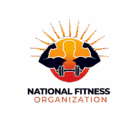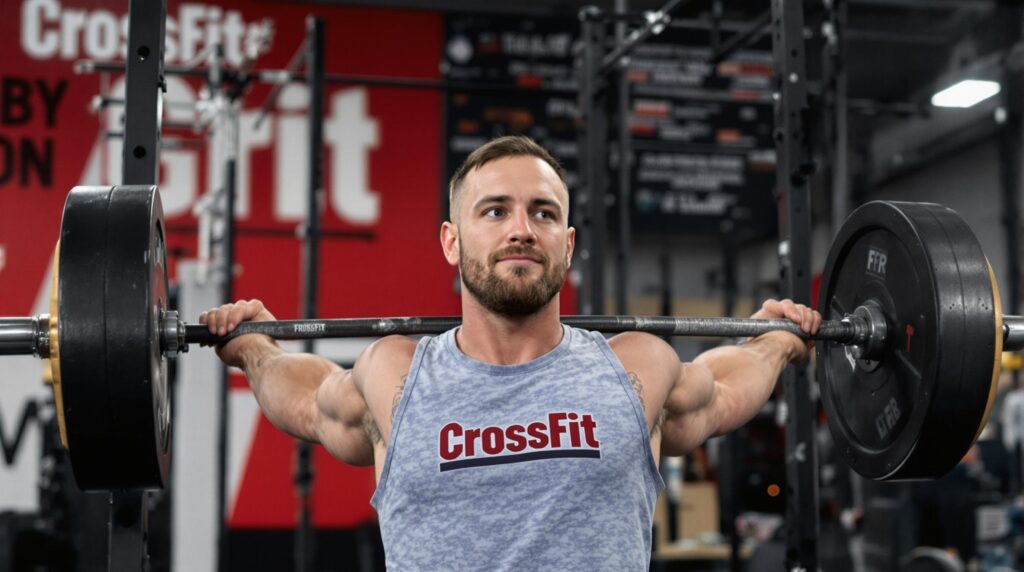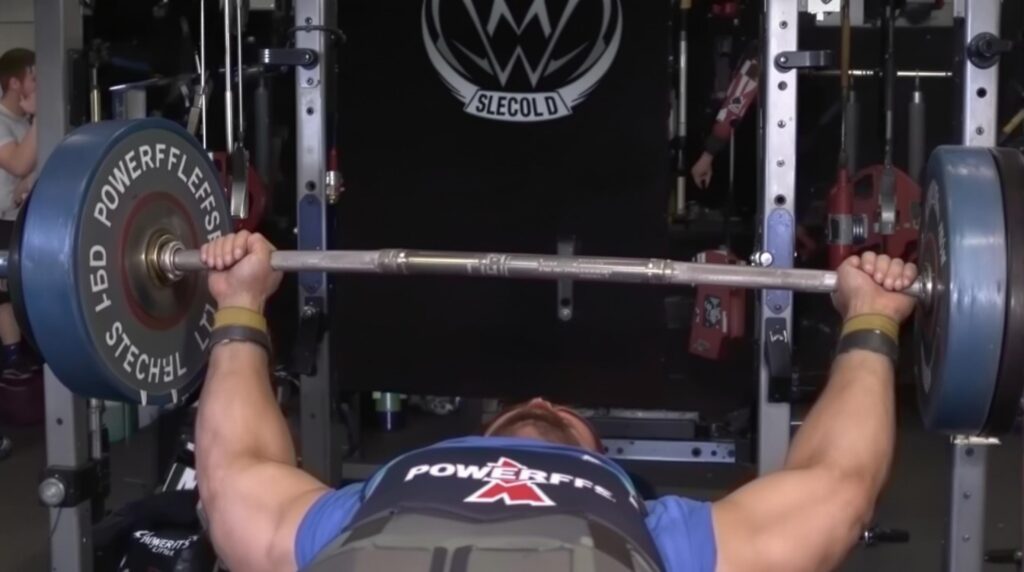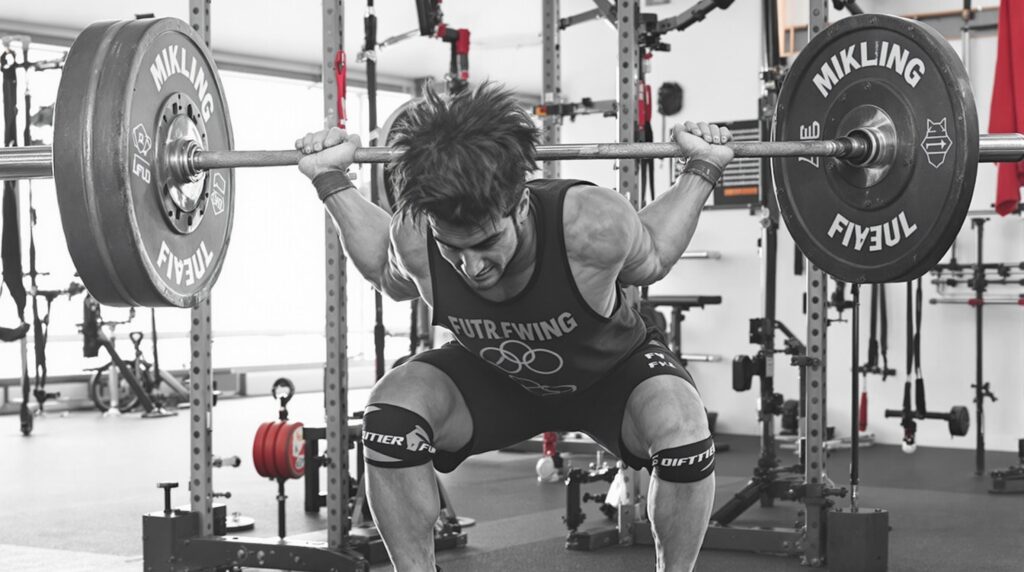Training like a CrossFit champ requires more than just physical strength—it’s a combination of specialized workouts, precise nutrition, and unshakable mental discipline that transforms good athletes into champions. Elite performers like Mat Fraser and Tia-Clair Toomey have mastered this formula, integrating structured training systems with recovery protocols that optimize their performance across all CrossFit domains.
Key Takeaways
- Elite CrossFit athletes follow a three-pillar approach encompassing physical training, nutrition, and mental conditioning
- Champions like Mat Fraser use structured EMOMs and progressive loading to build superior work capacity
- Precise macronutrient timing with 4-7g/kg of carbohydrates fuels high-intensity performance
- Mental training techniques including visualization and meditation create the psychological edge needed for competition
- Strategic recovery protocols are equally important as intense training sessions for long-term progress
The Elite CrossFit Athlete Formula
What separates a CrossFit champ from the average athlete isn’t just genetic gifts—it’s their comprehensive approach to training. The best in the sport have mastered three foundational pillars: physical capacity, nutritional strategy, and psychological strength.
Mat Fraser, five-time CrossFit Games champion, didn’t dominate the sport through random training. His success came from systematic progression, carefully tracking performance metrics, and addressing weaknesses with brutal honesty. The data backs this up—during CrossFit Open workout 24.1, the top 1% of athletes finished under 7 minutes while median times were around 10 minutes for men and 12 minutes for women.
This performance gap isn’t accidental. Champions follow structured programs that balance strength, skill development, and metabolic conditioning. They don’t cherry-pick workouts they enjoy—they target limitations with the same enthusiasm as they showcase strengths.

Building a Champion’s Engine Through High-Intensity Training
The exceptional work capacity of a CrossFit champ comes from systematically building their engine through varied high-intensity training. Mat Fraser’s signature 40-minute EMOM demonstrates this perfectly: every minute on the minute, he completes 15-calorie row, 15 toes-to-bar, 15-calorie air bike, and 6 D-ball over-shoulder throws (150 lb) for 10 complete rounds.
For those not at champion level yet, scaling options make this training style accessible while preserving the stimulus:
- Reduce calories (10-calorie row instead of 15)
- Substitute movements (V-ups instead of toes-to-bar)
- Use lighter weights (100 lb ball instead of 150 lb)
- Adjust rounds (6-8 rounds instead of 10)
What makes this training approach so effective is how it varies throughout the season. Early season focuses on shorter work intervals with rest, gradually transitioning to sustained effort closer to competition. This periodization prevents burnout while building capacity.
The standard workout structure provides a framework that athletes at all levels can follow:
- Warm-up: Dynamic movement preparation
- Strength/Skill: Focused technical development
- WOD (Workout of the Day): High-intensity conditioning
- Cool-down: Recovery facilitation
Strength Development: The Foundation of Elite Performance
While CrossFit is known for its metabolic conditioning, champions understand that strength creates the foundation for all other physical attributes. Mat Fraser’s back squat protocol provides insight into progressive strength development: starting with 6 reps at 60% of one-rep max (1RM) every minute for 6 minutes, then advancing to 8 minutes with 7-8 reps at weights up to 335 pounds.
Fraser typically began with 315 pounds for 6 reps, gradually increasing to 335 pounds over his training cycles. This methodical progression builds not just maximum strength but also strength endurance—critical for maintaining technique during fatiguing workouts.
Key strength exercises in a champion’s program include:
- Squats (back, front, overhead)
- Deadlifts (conventional and sumo)
- Olympic lifts (clean and jerk, snatch)
- Strict gymnastics movements (pull-ups, handstand push-ups)
The magic happens in how these exercises are programmed. A common protocol might include 10 sets of 3 front squats at 83% 1RM, focusing on perfect technical execution rather than grinding through reps. This approach builds strength without compromising recovery for conditioning work.
Fueling Like a Champion: Nutrition Science for CrossFit
The saying “abs are made in the kitchen” applies doubly for CrossFit athletes—champion-level performance requires precision nutrition. Macronutrient targets for elite CrossFit athletes typically fall within these ranges:
- Carbohydrates: 4-7 g/kg bodyweight
- Protein: 1.4-2 g/kg bodyweight
- Fats: 0.8-1 g/kg bodyweight
These aren’t arbitrary numbers. Tia-Clair Toomey, multi-time CrossFit Games champion, consumes approximately 2,500 calories daily with 230-250g carbohydrates, 140-150g protein, and 65-70g fat. This fueling strategy supports her training volume while maintaining optimal body composition.
Many elite athletes use cyclical carbohydrate approaches. Emma McQuaid, for example, varies her carbohydrate intake based on training demands: 285g on high-volume days, 230g on standard training days, and 190g on rest days. This strategic variation maximizes glycogen storage when needed while preventing unnecessary fat storage.
Research has identified common nutritional deficiencies in CrossFit athletes, particularly vitamin E, iron, calcium, and folate. Addressing these micronutrient gaps is equally important as hitting macronutrient targets.
Micronutrition and Meal Timing: Fine-Tuning Performance
Beyond macros, CrossFit champions pay attention to micronutrient quality and meal timing. To address common deficiencies, they prioritize:
- Vitamin E: Nuts, seeds, and healthy oils
- Iron: Red meat, beans, and dark leafy greens
- Calcium: Dairy products or fortified alternatives
- Folate: Leafy greens, legumes, and fortified grains
Caloric needs vary based on body weight, but a typical formula for active CrossFit athletes might look like:
- 140lb athlete: ~2,000-2,400 calories
- 160lb athlete: ~2,300-2,700 calories
- 180lb athlete: ~2,600-3,000 calories
Meal timing becomes a critical factor in optimizing performance. The pre-workout window (1-2 hours before training) should include easily digestible carbohydrates with moderate protein to fuel the session. The post-workout window (within 30-60 minutes) requires a combination of fast-absorbing carbohydrates and quality protein to jumpstart recovery.
Hydration protocols also shift based on training intensity and environmental conditions. Most champions aim for a baseline of 0.5-1 oz of water per pound of bodyweight daily, increasing with training volume and heat exposure.
The Champion’s Mind: Mental Training Systems
Physical capacity alone doesn’t create a CrossFit champ. The sport’s elite performers develop mental fortitude through systematic training of four key psychological pillars:
- Motivation: Setting specific, challenging but achievable goals
- Self-confidence: Building belief through progressive accomplishments
- Emotional control: Managing stress and anxiety during intense efforts
- Concentration: Maintaining focus despite fatigue and distraction
Practical application of these principles includes setting SMART goals like “Improve Fran time by 20 seconds within 8 weeks” rather than vague aspirations. Visualization techniques used by elite athletes have been shown to correlate with 23% better stress resistance during competition.
Daily meditation practice makes a measurable difference—studies show a 31% reduction in anxiety among regular practitioners. This translates directly to better performance under pressure during crucial competitive moments.
I’ve found that the mental aspects of training often separate good athletes from great ones. When physical capabilities reach their ceiling, it’s mental resilience that continues to expand potential.
Recovery Strategies: The Hidden Performance Multiplier
Champions understand that gains happen during recovery, not during training. Their recovery protocols are as disciplined as their workouts. Sleep optimization sits at the foundation—most elite CrossFit athletes prioritize 8-9 hours of quality sleep, often using blackout curtains, consistent sleep schedules, and screen-time limits before bed.
Active recovery between high-intensity sessions maintains blood flow without adding fatigue. This might include:
- Low-intensity swimming or cycling
- Light rowing (keeping heart rate below 130 BPM)
- Gentle yoga or mobility work
- Walking in nature
Mobility work significantly impacts movement efficiency and injury prevention. Champions typically spend 15-30 minutes daily on targeted mobility, addressing limitations specific to their bodies rather than generic stretching routines.
Stress management extends beyond physical recovery. Mindfulness training has been linked to 17% improvements in movement accuracy and 15% higher overall productivity. Many CrossFit champs use journaling, breathing exercises, or meditation to manage their overall stress load.
Advanced Programming: Periodization for Peak Performance
The training of a CrossFit champ isn’t haphazard—it follows strategic periodization cycles to ensure peak performance at key competitions. These cycles typically include:
- Off-season: Building base capacity and addressing weaknesses
- Pre-season: Increasing training specificity and volume
- Competition phase: Refining skills and maintaining capacity
- Deload/recovery: Planned reduction in training stress
Within these broader cycles, champions balance aerobic and anaerobic system development through varied conditioning work. A typical week might include long, steady-state sessions (30-60 minutes at moderate intensity), threshold work (intervals at 80-90% effort), and sprint training



